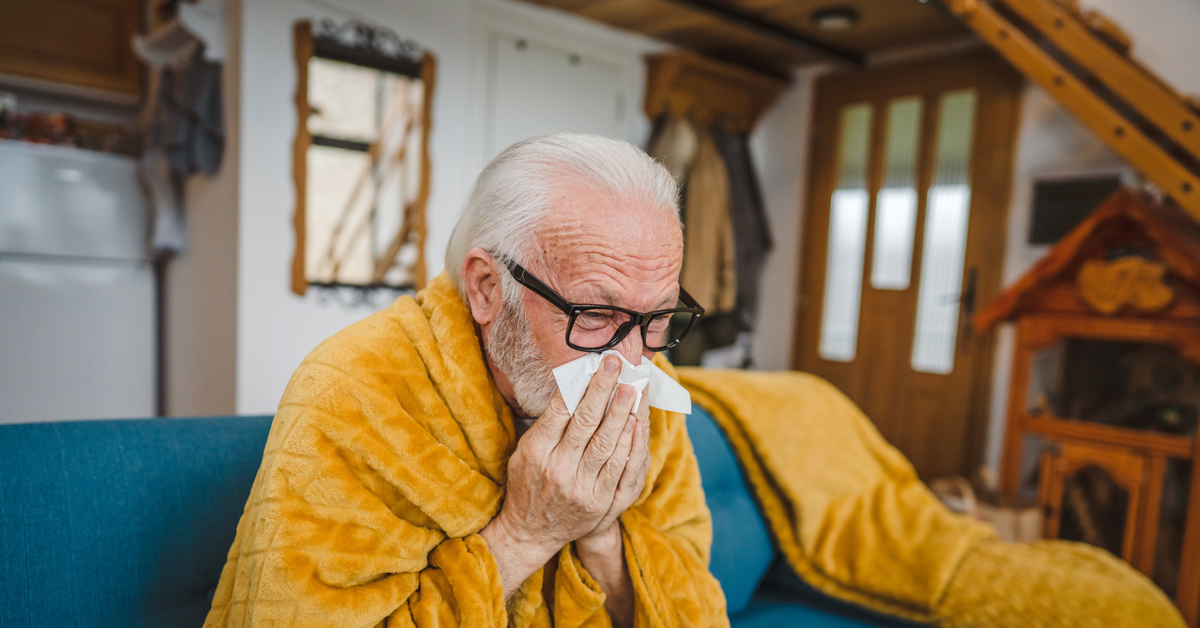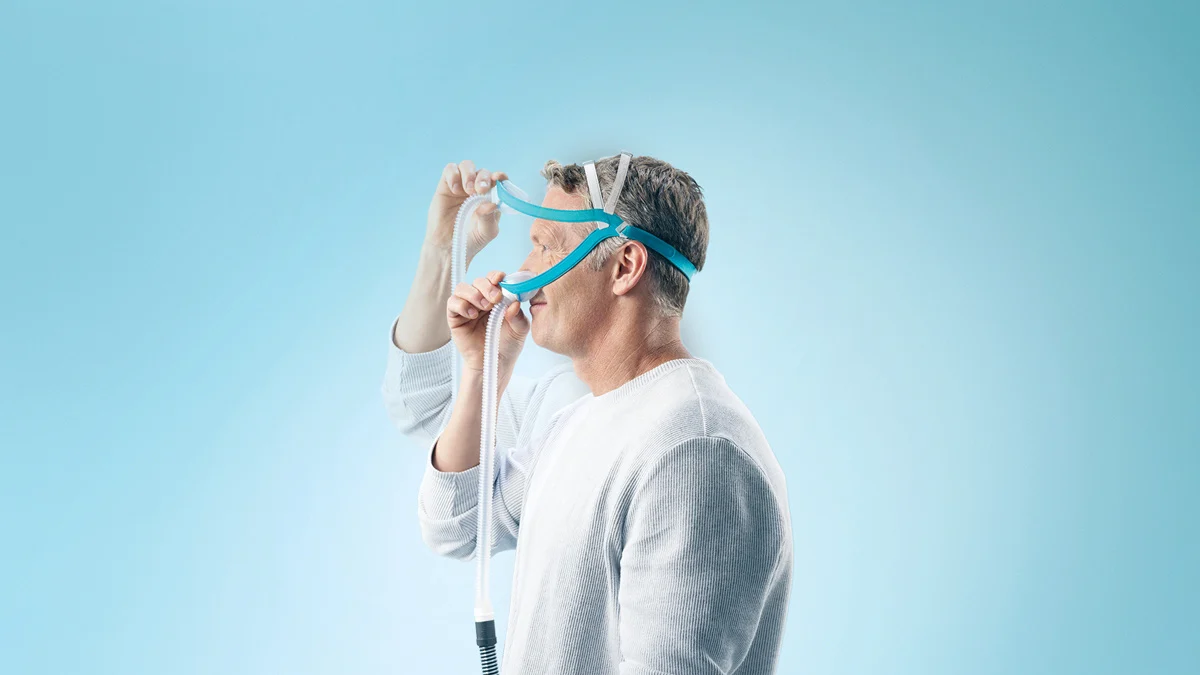Understanding COPD and Its Impact on Swallowing
Chronic Obstructive Pulmonary Disease (COPD) primarily affects the respiratory system, hindering the ability to breathe efficiently. However, a less-discussed complication of COPD is dysphagia, or difficulty swallowing. This issue arises because swallowing and breathing are interconnected processes that share the throat, and disruptions in one system can adversely impact the other.
Lesley Williams, a Registered Respiratory Therapist at Apria with 35 years of experience, states, "Managing the intricate relationship between COPD and dysphagia requires an understanding of both conditions. By adopting targeted strategies such as controlled breathing techniques and mindful eating practices, individuals with COPD can significantly reduce the risks of dysphagia and improve their overall quality of life."
The Complexity of Swallowing and Breathing
Swallowing is a complex action involving multiple muscles and exact timing. Breathing and swallowing are reciprocal functions, meaning when one function (breathing or swallowing) is occurring, the other cannot simultaneously occur. When we swallow, the airway closes to prevent food and liquid from entering the lungs. In reverse, when we breathe, the pathway to the stomach is closed to avoid food or liquid from your digestive system entering your airways.
For a person without COPD, the transition between swallowing and breathing is seamless and happens multiple times during a meal. However, individuals with COPD face challenges due to the frequent closing of airways, leading to fatigue and shortness of breath. This fatigue can disrupt the delicate timing required for safe swallowing, increasing the risk of aspiration (inhaling food or liquid into the airway) and leading to aspiration pneumonia.
Why People with COPD Struggle with Swallowing
Several factors contribute to swallowing difficulties in people with COPD:
Fatigue from repeated airway closures: COPD patients often experience fatigue from the numerous times their airways must close during a meal. This can lead to improper timing, where they might inhale just after swallowing, causing inhaling food particles or liquid known as aspiration.
Prolonged swallowing time: Swallowing requires a brief pause in breathing, typically for a few seconds. Even this short interruption can cause significant breathlessness for COPD patients, prompting them to try to breathe before the swallow is complete.
Weak diaphragm muscles: COPD can weaken the diaphragm, making it challenging to clear acid reflux from the esophagus. This can make swallowing difficulties worse.
Symptoms of Dysphagia in COPD Patients
Recognizing the signs of dysphagia is crucial for early intervention. Symptoms include:
- Pain while swallowing
- Inability to swallow
- The sensation of food being stuck in the throat or chest
- Drooling
- Hoarseness
- Regurgitation of food
- Frequent heartburn
- Food or stomach acid backing up into the throat
- Unintentional weight loss
- Coughing or gagging when swallowing
Enhancing Safety While Eating
For individuals with COPD, adopting specific strategies can significantly reduce the risk of aspiration and improve the overall eating experience:
Sit upright: Always eat upright to facilitate easier swallowing and reduce the risk of food entering the airway.
Eat slowly: Take your time when eating. Put down utensils between bites to slow down the pace.
Exhale while swallowing: Ensure you exhale after each swallow to help prevent aspiration.
Take small bites and Sips: Smaller portions are easier to manage and less likely to cause choking or aspiration.
Avoid eating during severe COPD symptoms: If you experience severe shortness of breath, perform breathing exercises like pursed lip breathing to recover before eating.
Oral hold exercise: Strengthen voluntary swallow muscles by practicing the tongue-hold swallow (THS) exercise without food or liquid. To perform this exercise:
- Protrude your tongue as far as possible.
- Hold the front of your tongue between your front teeth, slightly behind the tip.
- Swallow saliva.
By understanding the intricate relationship between COPD and dysphagia and implementing these safety strategies, individuals can better manage their condition and improve their quality of life. Proper awareness and proactive measures can significantly reduce the risks associated with dysphagia in COPD patients. If you want to begin your journey to better breathing, explore Apria's Respiratory Care program.
%20(1).jpg?width=1120&height=376&name=AD-NewsletterBanner-Summer-MyAirvo2-c1%20(2)%20(1).jpg)
References
Lin, Ting-Fen, and Samantha Shune. “Chronic Obstructive Pulmonary Disease and Dysphagia: A Synergistic Review.” Geriatrics (Basel, Switzerland), August 24, 2020.
Mancopes, Renata, Fernanda Borowsky da Rosa, Lidia Lis Tomasi, Adriane S. Pasqualoto, and Catriona M. Steele. “Chronic Obstructive Pulmonary Disease and Dysphagia: What Have We Learned so Far and What Do We Still Need to Investigate? | Perspectives of the Asha Special Interest Groups.” ASHAWIRE, October 7, 2021.
“Aphasia: Types, Causes, Symptoms & Treatment.” Cleveland Clinic. Accessed June 18, 2024.
Steidl, Eduardo, Carla Simone Ribeiro, Bruna Franciele Gonçalves, Natália Fernandes, Vívian Antunes, and Renata Mancopes. “Relationship between Dysphagia and Exacerbations in Chronic Obstructive Pulmonary Disease: A Literature Review.” International archives of otorhinolaryngology, January 19, 2015.
LEGAL DISCLAIMER: Material in this newsletter is provided for general health education and informational purposes and to provide references to other resources only; it may not apply to you as an individual. While Apria Healthcare believes that the information provided through this communication is accurate and reliable, Apria Healthcare cannot and does not make any such guarantee. It is not intended to be a replacement for professional medical advice, evaluation, diagnosis, services or treatment (collectively, “medical treatment”). Please see your healthcare provider for medical treatment related to you and your specific health condition(s). Never disregard medical advice or delay seeking medical care because of something you have read on or accessed through this website. Reading this newsletter should not be construed to mean that you have a healthcare provider/patient relationship.





